Horror Fans, we have a problem. An integral part of our beloved genre has been conspicuously absent the past couple of decades. I’m referring to the almighty Horror Movie Icon.
Soon after movies started being made in the way they continue to be made now – that is with sound – horror icons have been prominently featured in cinema. Beginning in the 1930s, Universal Studios bestowed upon the masses the first generation of horror icons which include Dracula, Frankenstein’s Monster, and the Wolfman. Hammer Films took the baton and ran with it, bridging the first set of horror icons with the next generation of horror icons that sprang forth from the inky darkness of myriad filmmakers’ imaginations during the Golden Age of Horror Cinema – 1968 through 1988. These include Leatherface, Michael Myers, Jason Voorhees, Freddy Krueger, and Pinhead to name a few.
As the 1980s gave way to the 1990s a strange thing happened. Mainstream horror went away for a while and horror icons went with it. And when horror movies slithered back to theaters midway through that decade, the icons were left behind.
You may be wondering why this is a problem. The answer is simple: Compelling horror icons are largely responsible for ensnaring youngsters into the dark, addictive, and absolutely wonderful world of horror movies. I’d be doing something equally nerdy but far less exciting had I not found Jason, Freddy and the rest when I was a kid. In order to assure the health of horror going forward, creative young people need to have something to get excited about. Without a few monstrous villains to root for and to dress as on Halloween, there aren’t many portals into our bizarre bit of cinematic real estate (Continued after the pic).
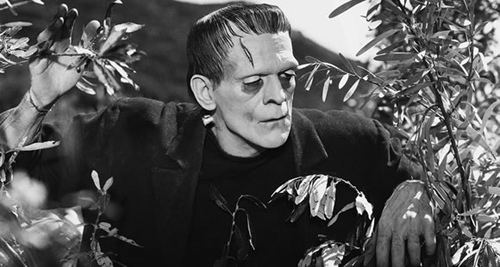
So, why did this happen? There is no comprehensive answer and the variables involved are many. But I have a few theories about the cause as well as a potential solution to the current dearth of horror icons. So, let’s get started. Shall we?
Modern horror has drifted away from icon-centric stories. And I’m not talking about indie horror. There have been many outstanding horror flicks made on tiny budgets. But these reach a relatively small, niche audience and do little to affect the collective pop cultural awareness, that of the youth in particular. The movies I’m referring to are the ones with a marketing apparatus capable of pushing them into theaters, making them easily accessible to the Horror Community at large — the type of flicks that groups of teens flock to the Cineplex in droves to see.
For over a decade now studios have been busy strip mining our genre’s precious resources, namely the last generation of horror icons, rather than creating new ones. With each remake, re-imagining, and regurgitated bit of ridiculousness, the essences of the original movies are diminished. What’s more alarming is that this model of horror film making isn’t sustainable. It’s a cynical get-rich-quick scheme by studios and distributors and it’s atrophying the commercial viability and artistic quality of the genre going forward.
Even so, the horror movies that are both widely available and aren’t remakes are devoid of icons. Torture porn, zombies, and found footage ghost stories are de rigueur and none of these subgenres emphasize iconography to any extent. Not the way Universal Monster Movies and Hammer Films did, and not nearly as much as the slasher flicks and exploitation horror of the 70’s and the 80’s did.
To begin a “post-slasher movement”, first let’s look at what’s worked well in the last generations of horror movie icons:
The most iconic horror figures of the golden era had great iconography, such that it’s been permanently woven into the global pop cultural quilt. The best examples utilize an objective correlative – Pinhead’s puzzle box, Jason’s hockey mask, etc. These objects represent conditions about their associated horror icons. Some of these objects are icons in more than one way, i.e., Freddy’s glove. The glove is a great objective correlative, but it’s also maybe the most iconic weapon in horror movie history – an instantly recognizable horror icon’s tool of the trade. That leads us to the iconic ways in which horror is meted out: Leatherface’s chainsaw, Jason’s machete, Michael Meyer’s butcher knife, Pinhead’s hooks and chains, etc.
Great horror icons are always created with an associative place too – Camp Crystal Lake, Freddy’s boiler room, rural eastern Texas, Haddonfield, so on and so forth. Most important, though, is imagery, which includes the combination of clothing, weapons, physical anomalies, etc. A great example is, again, Freddy Krueger – the hat, the sweater, the glove, the burnt flesh. Also, you couldn’t go anywhere in the world wearing a white Hockey mask without eliciting thoughts of Jason. And finally, sounds, including both music and effects — Friday the 13th’s “Ki-ki-ki-ki, ma-ma-ma-ma”, John Williams’ theme from Jaws, John Carpenter’s synthesized 5/4 motif from Halloween, Freddy squealing his blades across metal pipes, etc.
All of this iconography is the result of mythology. Mythology is essentially the origin story, the resultant rules and the storyteller’s adherence to them. To understand how this works, go to your local comic book shop and brush up on super heroes because they function identically to horror icons. Peter Parker gets bitten by a radioactive spider. Bruce Wayne’s parents are murdered in cold blood by a common Gotham street thug. Superman was born Kal-El on the planet Krypton and shuttled to earth as an infant by his father just before the Krypton’s destruction. It is from these origin stories that these heroes’ powers, weapons, uniforms, methods, personalities, and weaknesses manifest (Continued after the pic).

When Peter Parker develops strange arachnid-like powers, he becomes Spiderman and uses his new found powers for the good of the city, but with great power comes great responsibility and loved ones become collateral damage. Bruce Wayne inherits billions which he uses to develop the means to wipe the streets of Gotham clean under the guise of Batman, but he’s also psychotic and miserable as a result of his traumatic past and current isolation and loneliness. Superman uses his physical advantages on earth to protect his new parents and home planet from those who would do them harm, but radioactive fragments of his real home planet render him mortal, just ask Lex Luther.
Horror icons work the same way. We all know the origin stories of Frankenstein’s Monster, Jason Voorhees, Freddy Krueger, etc. Here, supernatural powers, i.e. stalking teenagers in their dreams, substitute for super powers and just like super heroes, horror icons all have weaknesses and, thus, must follow the rules of their respective mythologies. So, while Superman can literally do anything….that is, until he’s in close proximity to an innocuous green crystal called Kryptonite, Freddy haunts and butchers kids in their dreams. However, if you pull Freddy into the waking world, he becomes tangible, thus vulnerable. These rules manifest from each icon’s origin story and provide a foundation for iconography (Continued after the pic).
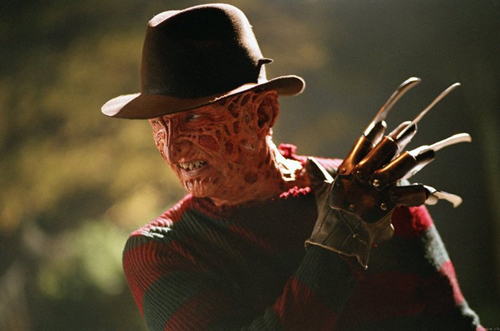
Rules can be used to help make the story play too, by creating dramatic irony for example. If we’re privy to the rules before our protagonist figures out what they are, then every scene has built-in tension. It’s like Hitchcock’s proverb about building suspense by showing us a shot of the bomb under the table: “There’s two people having breakfast and there’s a bomb under the table. If it explodes, that’s a surprise. But if it doesn’t…” From that point forward, merely showing our protagonists sitting at that table while having a mundane conversation creates a scene that’s rife with tension. If you substitute “Bomb” with “Rules”, then every scene that happens while our heroes are still piecing together how things work will be a nail-biter. It’s a pretty easy way to inject the hope-vs.-fear dynamic into your entire mythology, the byproducts of which are tension and plot.
Finally, it’s important to establish rules and iconography in earnest, rather than ironically or self-referentially. Horror Filmmakers: You don’t have to be cheesy or tongue in cheek. The over rated and unfortunate Scream series satirized the mechanics of the entire slasher genre, to its detriment in my opinion. Now, it’s nearly impossible to make an iconic horror film, like a slasher flick, with a serious, frightening tone. Instead, the post-Scream/Scary Movie horror zeitgeist dictates that if you create a horror icon it has to be silly. Adam Green’s Hatchet series, which stars a bevy of iconic actors from the golden age — most notably Kane Hodder, is an example of the current approach to iconic horror in the modern age. And while Green has proven himself a very capable genre filmmaker, Hatchet is more of the same post-Scream silliness. To me, that’s unfortunate. Horror should be scary like apples should be fruity, you know? (Continued after the pic)

My solution to the lack of modern horror icons is pretty simple and its origins are once again available in the confines of comic book shops everywhere. We can also get there by taking a cue from the original Texas Chainsaw Massacre – a masterpiece as far as I’m concerned. Look at the movie’s tone and the corresponding aesthetic; it’s bleakly realistic, almost oppressively so. This makes the movie a scary, disturbing, exhausting experience – one that’s infinitely gratifying. Leatherface is the embodiment of that experience. To replicate that type of success in bringing back the almighty horror icon, one must do what both Alan Moore and Frank Miller did to Super Heroes back in 1986-87 when Moore put out The Watchmen and Miller put out The Dark Knight Returns.
Both of these comic book miniseries took super-hero-men-in-tights, stripped them of super powers, and contextualized them in a sort of hyper-reality. They asked, “What type of city would compel a billionaire philanthropist to develop deadly technology, train his ass off, and wear a costume designed to scare the shit out of the worst criminals imaginable while he dishes out violent vigilante justice? More importantly, what must such a man’s psyche be like?” I mean really, is Batman a hero or is he a sociopathic fascist? It’s fascinating, and the results changed the entire comic book aesthetic, industry, targeted demographic, artistic merit and creative possibilities. It was a profound shift and comic books remain inspired to this day (Continued after the pic).
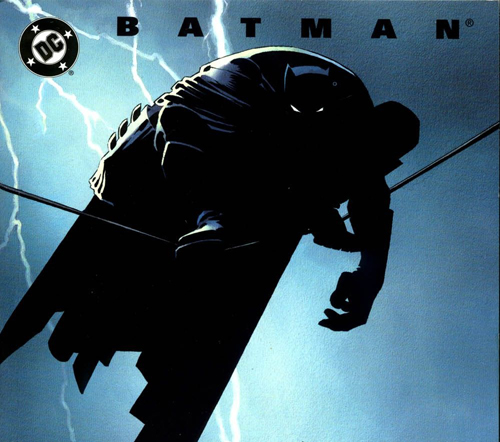
There are a couple of movies from the past decade that came close to kicking off the post-slasher movement, purposely or not, that we can use as a jumping off point:
Rob Zombie’s much-maligned Halloween II is one such modern horror film to nearly pull this off, albeit probably by accident. Yes, I was one of the only critics in the country who gave it a favorable review, but that notwithstanding, look at some of Zombie’s decisions regarding iconography in that film. Michael Myers doesn’t show up wearing a brand new, creased utility suit and a spankin’ new white William Shatner mask to cleanly and easily dispatch all of Laurie Strode’s friends. Instead, he’s thrust into an ultra-real version of Haddonfield and its outskirts through which he walks miles across the countryside, sleeping in barns and eating what he can, as he makes his way back to suburban Haddonfield.
He shows up wearing the mask, but it’s filthy and rotting, much like Michael himself, sporting ratty hair down to his ass and a beard that would make ZZ Top jealous. The effect is awesome, imposing, and disturbing and it pulls that mythology into our reality. It really works in conjunction with the movie’s violent, gritty and dark tone. If the film had been something brand new, rather than the sequel to an unnecessary and bad remake, I suspect Halloween II would have been embraced by more horror fans (Continued after the pic).
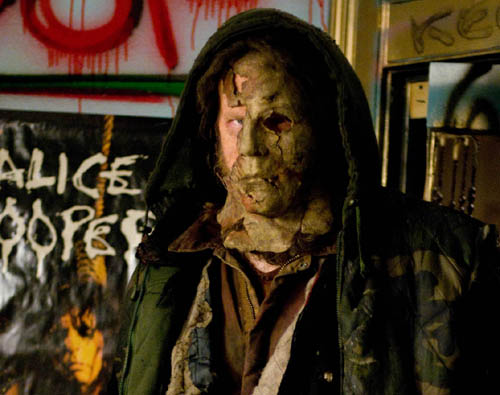
The other fairly recent movie that did some things close to what needs to be done is Behind the Mask: The Rise of Leslie Vernon. In a universe in which the slasher icons from horror’s golden age are real, a documentary film crew follows Leslie Vernon, a small time masked serial killer who aspires to the reputations of Jason, Freddy, et al, as he stalks teenagers in the comfy little burg known as Glen Echo. Scott Glosserman’s smart and funny deconstruction examines the way slasher flick tropes would work in the real world and its deconstruction is done respectfully and honestly, and not just for easy laughs by way of horror movie in-jokes. A similar approach, minus the comedic tone, would work very well.
The horror genre is only as strong as the boogiemen that inhabit it. Remakes certainly won’t save us. The reasons are many. But the damage these terrible knock-offs do to the viability of the horror genre notwithstanding, horror Icon’s have a life span. At the end of which they reach what I like to think of as “enlightenment” and become immortalized in pop culture. When this happens we know it because they become Halloween Decorations. The first generation of horror icons has been here for a while – innocently residing in Scooby Doo cartoons, on cereal boxes, and on your party favors and decorations. When enlightenment happens, those transcendent icons are rendered safe and they’re replaced with a new generation of edgy, scary icons appearing in movies and beginning the cycle anew (Continued after the pic).
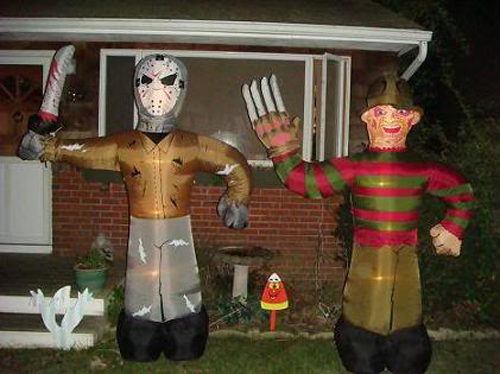
Incidentally, it’s September as I write this and soon I’ll be hanging depictions of Jason and Freddy on my doors and in my windows. Who will replace them on screen? Who will captivate and terrify tomorrow’s horror fans? The answer to this question is as important as anything us horror movie buffs have had to consider yet. We need to remember why we love The Texas Chainsaw Massacre, we need to examine how Frank Miller and Alan Moore made comic books the choice medium of envelope-pushing storytelling for adults, and we need other filmmakers to take the types of chances Rob Zombie and Scott Glosserman have taken even when failure is a likely outcome because I can’t imagine the day when I’ll finish a piece of Halloween cake only to find a cute picture of the Human Centipede or one of Jigsaw’s torture devices depicted on my paper plate.
6 thoughts on “Wanted: New Horror Movie Icons”
Comments are closed.


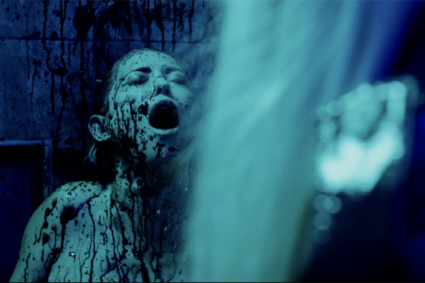
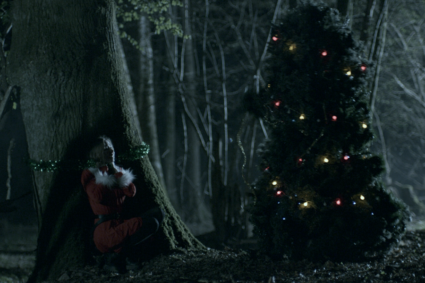











Great stuff.
In your opinion, did the ‘Scream’ face dude and Jigsaw of the ‘Saw’ series come close to the horror icon status?
Thanks Bowie. I believe that Jigsaw only really works as an icon within an icon-vacuum. Jigsaw doesn’t adequately satisify all the criteria that past generations’ icons do. Ghostface, in my opinion, is really just a placeholder of a horror icon within the context of the Scream satire. It’d be like including Weird Al Yankovic’s “White and Nerdy” in a discussion of modern hip hop.
Awesome analysis, Jason, but I think horror icons aren’t just a Hollywood thing. Most of the classic silent films were horror movies with iconic villains–“Nosferatu’s” Orlok springs to mind. Literary horror gets by on the iconic, recurring character just as often. When we think of Lovecraft, we think of Cthulhu and his tentacles. You could make the argument that Cthulhu is Lovecraft’s least alien monster–why would alien evolution produce something so terrestrial as a bat/human/octopus hybrid? And yet we remember Cthulhu because Lovecraft gives him, as you so rightly point out, a distinctive visual appearance, a memorable dwelling place (non-Euclidean R’lyeh) and a vivid mythology (we don’t know about his origin, but what Lovecraft reader forgets that Cthulhu will be back “when the stars are right?”)
I think the problem with ’90s-present attempts to create iconic horror monsters is a lack of heart and a lack of honesty. The first time I saw “Texas Chainsaw Massacre,” I was surprised by how really good a movie it was, because it had such a pop-trash reputation. What made “TCM” work so well, in my opinion, was that it was fundamentally honest about itself, and the director’s love for and belief in his creations showed. The kids weren’t obnoxious stereotypes–they were kids. Leatherface and his family were an inspired crosshatching of Southern Gothic and Grand Guingnol. You don’t see a lot of love in “Final Destination” Parts 1-? or “Hostel.” You can hear the bills slapping palms, but not much more. To paraphrase Robert Frost, “No fears in the director, no fears in the viewer.”
Your connection of superheroes and horror icons is quite compelling, because what are Jason, Freddy and Pinhead if not supervillains? The difference is that we have no force of good to balance the scales. This raises a fascinating question: if there was no Wolverine or Batman and regular human beings had to face Magneto or Ras al’Ghul–could it be horror?
Great piece!
Hunter,
Thanks a lot!
Hollywood is irrelevant. Independent films (TCM), foreign films (Hammer), as well as Hollywood films (Universal Monsters) all play into this equation. And for me Orlok is the only horror figure from the silent era that comes close, but I actually view Orlok as the precursor to Horror Movie Icons as I’ve referred to them above. Because during the infancy of film and without sound, there were just too many absent components as well as the lack of a pop cultural media infrastructure to allow Nosferatu’s iconography to have had an effect in its time relative to that of the Horror Movie Icons that followed. In the 8 or 9 years between Nosferatu and the first Universal Monster Movies there was little to bridge the gap, so I felt justified in leaving Orlok to creep alone in silence.
Literature is indeed full of icons as well. Obviously, Dracula and Frankenstein’s Monster are ripped directly from the pages of literary horror. Literature used icons in the same way movies do and well before film came along. It’s where genres were established. What is a genre but a group of stories that share the same rules, conventions, tropes, and ICONS? It makes no difference whether we’re discussing Westerns, Mysteries, War Epics, or Horror stories, and likewise with regard to the media that delivers these stories.
And while I agree that ‘90’s horror is heartless and superficial, it really boils down to the simple omission of iconic horror figures. There was a shift away from iconic characters and toward the adherence to formal trends – found footage, self-referential/ironic/deconstructive, hyper stylized paranormal and Japanese-paranormal, and so on….the thing that all of these forms have in common is a lack of strong iconic players.
The reason superheroes make sense as a model for what works and what doesn’t with regard to iconic horror is due to their pure, un-obscured mythologies. There’s no noise to cut through. It’s very easy to identify all the components, how they relate to one another, and how they function within both the narrative and the mythology at large. And I love your question. I think it’s more complex than that though. Because again, I’m sometimes compelled to believe that the existence of omnipotent beasts such as the X-men and Superman, and psychopaths like Batman are horrifying, Magneto and Ras al’Ghul notwithstanding.
Great comment. Thanks again!
Good article with a lot of thought behind it. In fact, I should mull it over before putting up much of a response.
I miss great actors like Vincent Price and Boris Karloff in the horror genre. Just by their presence alone, they could create new horror icons…take Dr. Phibes, for instance. Now everything is corporate run and kid-centric and almost every horror movie features complete nobodies in cookie cutter roles. The bean counters wouldn’t dare have a mature actor in any significant role.
Thanks, Doc. I agree.